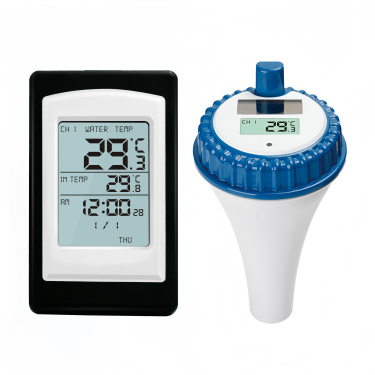
,文章长度1000字左右
html
Aquarium Thermometer: Essential Tool for Monitoring Water Temperature
Maintaining the right water temperature is crucial for the health and well-being of your aquatic pets. Whether you have a tropical fish tank or a cold-water aquarium, an aquarium thermometer is an indispensable tool to ensure your fish thrive in their environment. In this article, we’ll explore the importance of monitoring water temperature, the different types of aquarium thermometers available, and tips for choosing the best one for your setup.
Why Water Temperature Matters in Aquariums
Fish and other aquatic creatures are ectothermic, meaning their body temperature is regulated by their environment. Even slight fluctuations in water temperature can cause stress, weaken immune systems, and even lead to fatalities. Different species have specific temperature requirements:
- Tropical fish typically require 75-80°F (24-27°C)
- Cold-water fish thrive at 60-70°F (15-21°C)
- Marine reef tanks need stable temperatures between 76-82°F (24-28°C)
An aquarium thermometer helps you maintain these optimal ranges consistently, preventing sudden changes that could harm your aquatic pets.
Types of Aquarium Thermometers
1. Glass Thermometers
These traditional thermometers feature a glass tube filled with alcohol or mercury (less common now due to safety concerns). They’re typically suction-cupped to the inside of the aquarium glass. While accurate and inexpensive, they can be fragile and harder to read from a distance.
2. Digital Thermometers
Digital aquarium thermometers provide precise readings and often feature large, easy-to-read displays. Some models include:
- Probe-style thermometers with external displays
- Wireless models that transmit to your smartphone
- Multi-zone monitors for large aquariums
3. Stick-on Thermometers
These thin, adhesive thermometers attach to the outside of the aquarium glass. They’re convenient and safe but may be less accurate than other types, especially if not properly installed.
4. Infrared Thermometers
These non-contact devices measure surface temperature by pointing at the water. While convenient for quick checks, they don’t provide continuous monitoring and may be less accurate for aquarium use.
Choosing the Right Aquarium Thermometer
When selecting an aquarium thermometer, consider these factors:
Accuracy
Look for thermometers with ±1°F (±0.5°C) accuracy. Digital models often provide the most precise readings.
Ease of Reading
Keyword: aquarium thermometer
Choose a thermometer with clear markings or a digital display that’s visible from your normal viewing position.
Durability
Consider the construction quality, especially if you have active fish that might bump into the thermometer.
Placement Options
Some thermometers work best at specific locations in the tank. Ensure your choice can be positioned where you need it.
Additional Features
Higher-end models may offer:
- Temperature memory (high/low records)
- Alarms for temperature fluctuations
- Wireless monitoring capabilities
- Compatibility with heater controllers